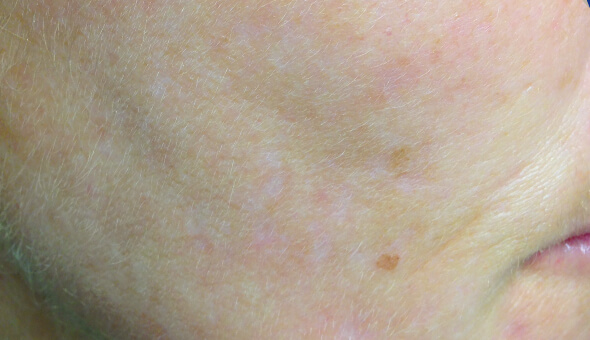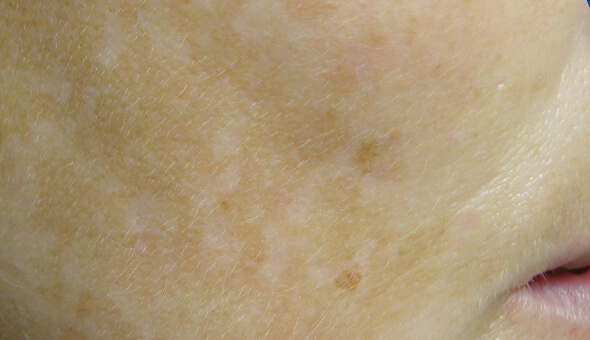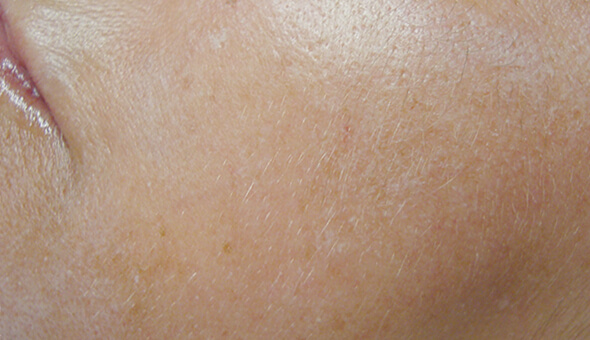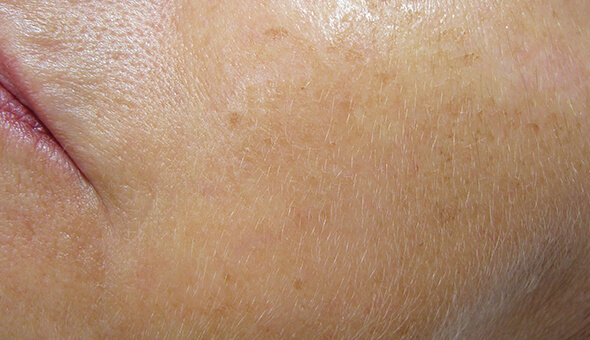A chemical peel, also known as chemexfoliation or dermapeeling. uses a chemical solution to improve the appearance of your skin. In this treatment, a chemical solution is applied to your skin, which causes trauma or injury to your skin’s layers. The skin layers eventually peel off revealing more youthful skin. The new skin is usually smoother with fewer lines and wrinkles, has a more even color and is brighter in complexion.
Some of the main effects of a chemical peel are: 2
- Reduce fine lines around the eyes and mouth.
- Improve wrinkles caused by sun exposure, age and genetic factors.
- Improve the appearance of skin due to some types of acne.
- Visibly reduce the appearance of freckles, age spots or hormones related to pregnancy and contraceptives.
- Improve texture, small scars, stretch marks or open pores.
Classification of skin peels
Peels are divided into several types according to the degree of penetration into the skin :
- Very superficial: They lightly exfoliate the stratum corneum to even out the tone and provide a brighter appearance .
- Superficial: They act at the epidermal level without going beyond the basal membrane. They stimulate the renewal of the epidermis, removing the most superficial layer.
- Medium: They reach the entire epidermis, producing significant flaking. They stimulate skin regeneration, enhancing the synthesis of collagen and elastin.
- Deep: They act on the deepest layers of the skin, producing a reorganization of the structural elements (collagen and elastin fibers). It is mainly indicated for severe scars caused by acne and for moderate aging due to sun exposure.
Deep chemical peel: factors that influence the depth of exfoliation
There are several factors that influence how deeply you exfoliate:
- Concentration and pH : The depth (whether or not it is a deep chemical peel), intensity and effectiveness of the peel vary with the increase in the substance used and the pH.
- Type of chemical substances : Alpha-hydroxy acids (AHA), beta-hydroxy acids (BHA), alpha-keto acids or trichoacetic acid (TCA).
- Skin type and condition : Background, thickness, treated area or activity of the sebaceous glands.
- Application technique: Whether it is applied with a brush, gauze, cotton swab, the amount of product applied, the number of layers and the exposure time.
How does chemical skin peeling work?
The basic rule when doing a professional peeling consists of the following phases :
- Skin preparation: For the face, remove eye and lip makeup, cleanse, tone and remove oil from the skin. For body treatments, you can move directly to removing oil.
- Protection of sensitive areas: Delicate areas such as the outside of the eyes, nostrils or mucous membranes must be protected.
- Peeling application: It should be quick and uniform. You may feel a tingling sensation.
- Regeneration and application : To soothe, repair and decongest the skin, a mask is applied.
- Finishing and protection : Apply the cream to restore comfort to the treated fabric and broad spectrum sun protection with SPF 50+
-
Chemical peel before and after: mesopeel® treatment
-
After
Focal application of mesopeel melanoplus. Reduction of hyperpigmentation.
before
Results in a single mesopeel phenTCA session. Renewed and more radiant skin.
-
Facial chemical peel: precautions before treatment
Avoid prolonged exposure to the sun or UVA rays throughout the treatment cycle. For superficial peels, it is not advisable to paint, bleach, wax or trim the area in the 2 days before, and it is necessary to wait 1 month after getting a tattoo .
Adverse effects and contraindications
Although unlikely, slight edema, transient erythema, peeling or changes in skin texture may occur after treatment.
The use of chemical peels is mainly contraindicated in cases of:
- Pregnancy or breastfeeding.
- Hypersensitivity or allergy to any of the components.
- Treatments with oral isotretinoin (up to 6 months after the last dose) or other retinoids.
- Autoimmune diseases.
However, it is important to speak to a professional so that they can analyze your case.
We hope this article helps you understand what a chemical peel is and how it will transform your skin. There will be a before and an after.
-
Before and after Chemical Peeling
Chemical Peeling treatment is quick and brings visible results right after the first session, 15 days after application.
The procedure session lasts about 20 minutes. The professional will determine how many sessions will be necessary, and the time interval between them.
Chemical Peeling with other procedures?
- Yes, doctors often combine chemical peeling with microneedling, as the procedure helps enhance the results. Doctors use both treatments for the same skin complaints, and the benefits are broad – they stimulate collagen production and skin cell renewal.
Doctors do not recommend chemical peeling for certain individuals, including diabetics, pregnant women, breastfeeding women, and those with active cutaneous herpes.
Vitamin C and Hyaluronic Acid to boost post-peel results
After the skin has recovered from the peeling process, to continue with incredible results, we recommend some products with two renowned active ingredients: Vitamin C and Hyaluronic Acid .
Vitamin C has antioxidant and brightening properties and can be a great ally after treatment.
Retinol + Hyaluronic Acid provides a filling effect and wrinkle reduction from the first week of use, thanks to its cell renewal action.
At night, apply Retinol + Hyaluronic Acid to clean, dry skin until completely absorbed. Remember to use a high SPF sunscreen daily to keep your skin protected and hydrated.
-
Chemical peels and exfoliants for localized blemishes
with the aim of removing the superficial layers of the skin where the spots are most concentrated . By removing the superficial layers of the skin, skin regeneration occurs from the inside out.
This procedure is indicated for:
- post-inflammatory hyperpigmentation caused by acne or other types of inflammation
- solar lentigines
- senile lentigines
Before and after results : moepel® depigmenting peeling
The moepel® MD melanoplus touch deep chemical peel from mesoestetic®, based on konjac acid, ferulic acid and TCA, allows you to treat localized spots precisely and intensively, acting on excess melanin and regulating its overproduction.
3 sessions are recommended to achieve the desired effects.
Conclusion: Chemical peeling before and after
Chemical peeling before and after is a popular and effective cosmetic procedure that can help improve the appearance of the skin by removing the outer layers and revealing a fresher, more youthful complexion. By using a variety of chemical solutions, dermatologists and skincare professionals can target specific skin concerns and tailor the peel to the individual’s needs. While chemical peels can produce impressive results, it’s important to understand that they do carry some risks and require proper preparation and aftercare. Consulting with a qualified professional is crucial to ensure the safest and most effective treatment.
-
Frequently Asked Questions:
Are Skin Cleansing and Chemical Peeling the same thing?
No. Skin Cleansing only removes impurities and blackheads from the skin. Chemical Peeling completely renews the surface layer of the dermis.
What is the difference between Chemical Peeling and Diamond Peeling?
The big difference between them is that Chemical Peeling uses acid on the skin and removes blemishes and marks. Diamond Peeling is indicated to maintain the skin’s hydration and radiance, as it provides a light exfoliation to remove the top layer of skin.
Can Chemical Peeling be done only on the face?
Any area of the body that has blemishes can be treated with chemical peels. Areas such as the back, buttocks and back of the thighs, for example, are highly sought after.
Is chemical peeling suitable for black skin?
Yes. A specialist will be able to assess and recommend the most appropriate treatment for your skin type, habits and routine.
Is exfoliating your skin at home the same as a chemical peel?
Homemade exfoliation is a type of physical peeling, but much more superficial than chemical peeling.
ABOUT US:https://techlicss.com/





 Before
Before